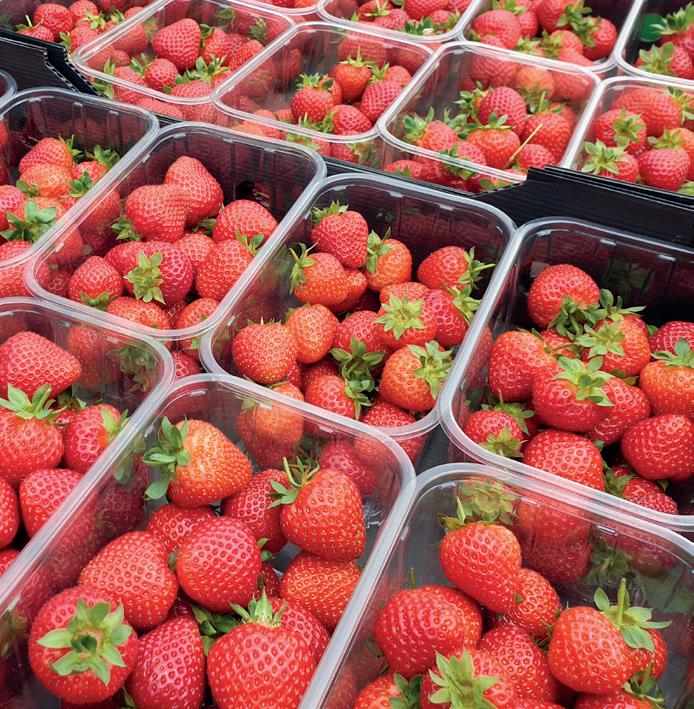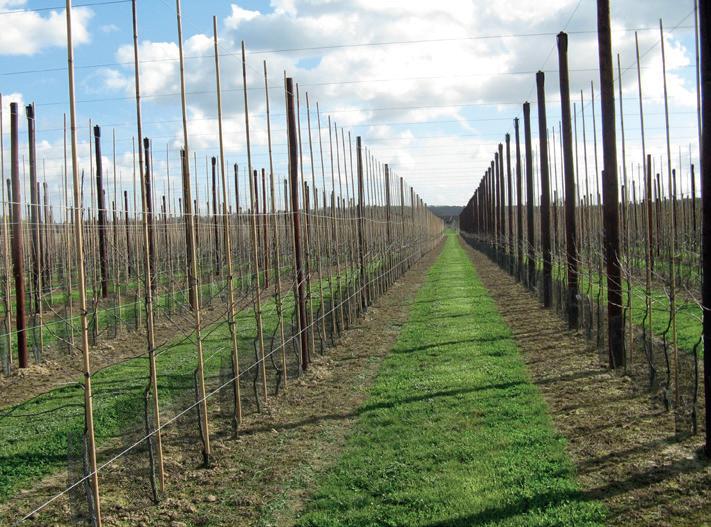
3 minute read
Developing non-chemical control strategies for SWD continued
Title: Exploitation of interspecific signals to deter oviposition by spotted wing drosophila
Funder: Biotechnology and Biological Sciences Research Council
Advertisement
Industry partners: University of Greenwich (Lead), Berry Gardens Growers Ltd, University of Southampton
Term: January 2019 to June 2022
Previous research by NIAB scientists has discovered that SWD lays fewer eggs on media previously visited by Drosophila melanogaster, the common fruit fly, which only tends to lay its eggs on ripe and overripe fruits, unlike Drosophila suzukii (SWD), which also lays eggs on under-ripe fruits. The project hypothesis was to try and identify what exactly is deterring SWD from laying eggs after D. melanogaster has visited, so that this compound might be able to be employed as a control strategy in commercial crops.
The project
The aim of this project was to understand SWD egg laying behaviour and to investigate how interactions with other Drosophila species impact SWD egg laying (oviposition). The work was carried out in the laboratory by a researcher, Trisna Tungadi, at East Malling. Trisna exposed D. melanogaster adults (male and female) to egg laying media before exposing the same media to SWD adults alongside a fresh media plate for comparison.
Results
The first experiment confirmed previous research, with fewer eggs laid by SWD on the plate that had previously been exposed to D. melanogaster (Figure 5). The next question was to find out which life stage and what D. melanogaster had left on those plates to deter SWD from laying its eggs. Further work discovered that the presence of live D. melanogaster larvae always resulted in fewer eggs being laid by SWD, rather than the presence of adult D. melanogaster
Biochemical research was done to assess cuticular hydrocarbons found in the larvae of both D. melanogaster and SWD. Both species shared some compounds but also species specific cuticular hydrocarbons were identified. A synthetic blend of the D. melanogaster cuticular hydrocarbons was made and spread on egg laying media, but unfortunately this did not deter SWD laying eggs. Further work is now investigating whether other compounds left by D. melanogaster larvae deter SWD from laying eggs.
Title: New sustainable solution to save healthy fruit from spotted wing drosophila: STOP-SPOT
Funder: Innovate UK
Industry partners: Big Sis (Lead), Berry Gardens Growers Ltd
Term: October 2021 to March 2023
Since the arrival of SWD in the UK in 2012, commercial soft and stone fruit growers have been heavily dependent on the use of conventional plant protection products to control the pest. Early research helped us to understand how best to monitor for the pest and manage its control but more recently, NIAB scientists have been engaged in developing novel management and control techniques that rely less on conventional chemical control. In this project, NIAB scientists have been collaborating with BigSis, a start-up company, and Berry Gardens Growers Ltd, to exploit a new approach called the Sterile Insect Technique (SIT). Sterile males are produced and introduced regularly by BigSis staff, to the semi-natural areas surrounding crops and within the crops themselves. These sterile males compete with wild males to mate with wild female SWD, which subsequently fail to produce any offspring. Such an approach is sustainable, non-toxic as the sterile males can’t establish in the environment, and is species specific, so has no effect on beneficial insects or other fauna. As native wild SWD are used to create the sterile males, there are no barriers to introducing the control system in the UK once the technique has been proven to be effective.
The project
Early trials on strawberry, now published, showed very encouraging results with SWD levels remaining very low throughout the season compared to the SWD populations in adjacent crops with no SIT release which received plant protection products only (Figure 6). The most recent studies in 2022 have been assessing the SIT technique in the laboratory, in further field trials, and in ‘semi-field’ trials. The laboratory work has been testing, for example, how well the sterile males compete with wild female SWD and what ratios of sterile males to wild females are required for effective control.
rapidly and it is impossible to regain control using SIT.
In small scale cage studies to assess the optimum ratio of sterile males to wild males, a ratio of 5:1 was efficacious; however, in commercial practice, BigSis is aiming for a ratio of 10:1. To date, BigSis have been rearing sterile males by hand, but this is time consuming and cannot produce sufficient numbers to provide a commercially reliable service to growers. BigSis is, therefore, now developing a fully automated system for rearing larger numbers of SWD males using several microproduction units. The target for 2023 is to produce millions of sterile males per week, which will be released in than 100 hectares. Producing such high numbers will avoid the problem of having insufficient numbers to release for a week or two in the middle of the season, which can lead to loss of control.
The service will be fully commercial in 2023 and initially offered exclusively to Berry Gardens Growers Ltd, in return for the support they have given to the research in the past few years.









